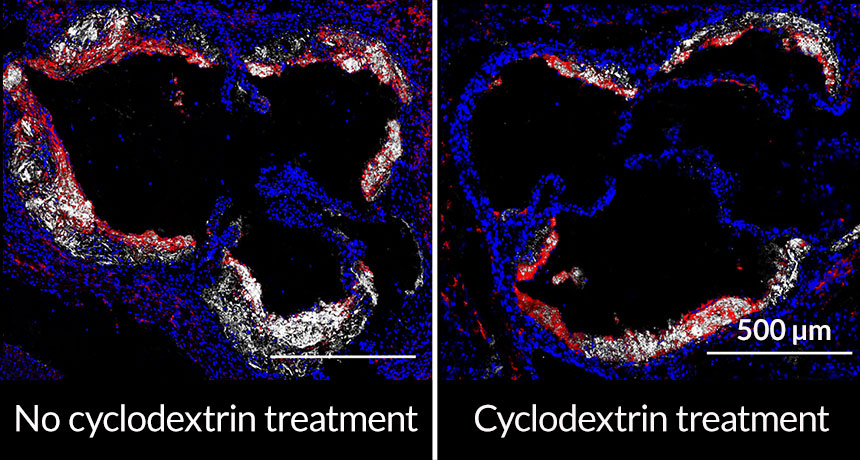A sugar can melt away cholesterol
Dose of sweet molecule removed plaques from mice’s hardened arteries

PLAQUE BE GONE A sugar called cyclodextrin stopped cholesterol crystals (white) from building up in the arteries of mice on a high-fat diet. Mice that had fewer cholesterol crystals also had fewer inflammation-causing immune cells called macrophages (red). Blue indicates nuclei of cells.
S. Zimmer et al/Science Translational Medicine 2016